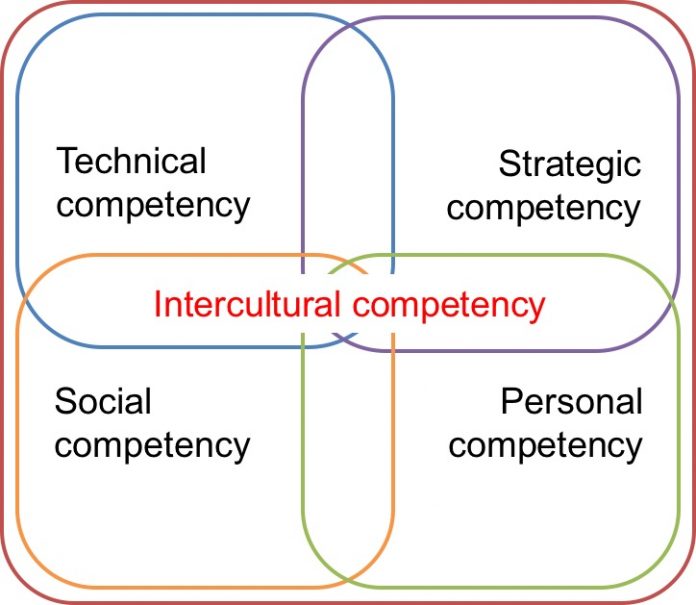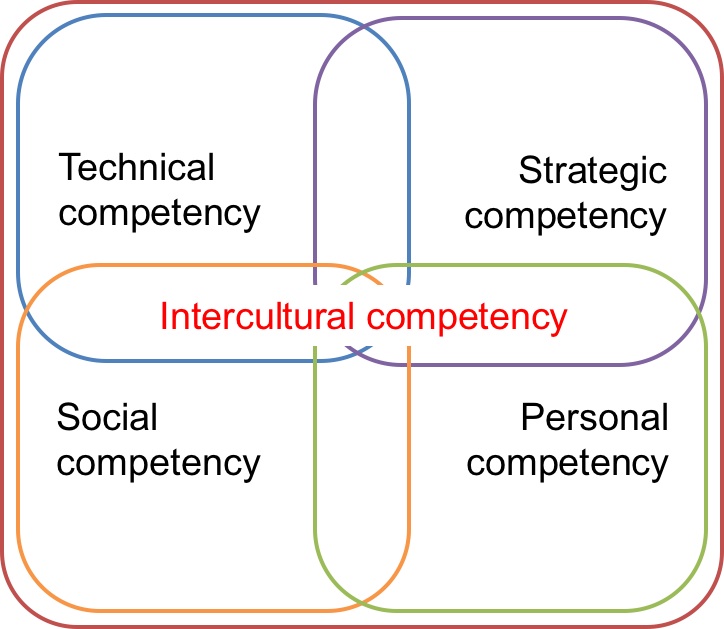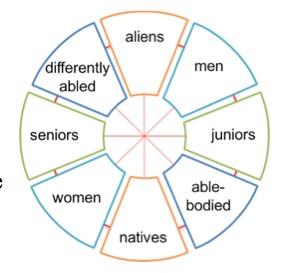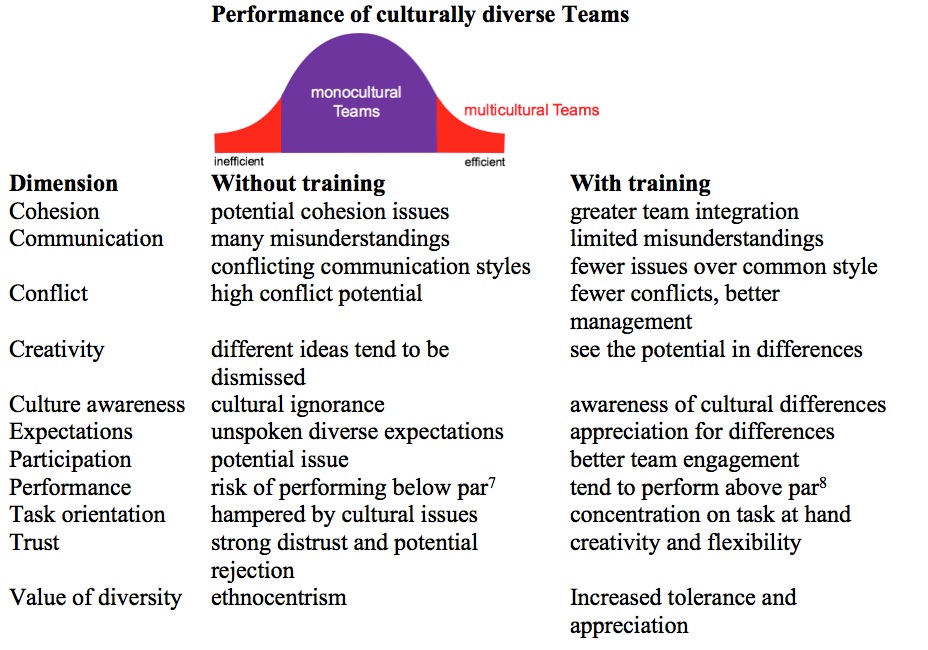
“We need diversity of thought in the world to face the new challenges.”
—Berners-Lee, inventor of the Worldwide Web, 2012
In the mobile and global world of today, a demographically diverse workforce has become the norm for business large and small. A diverse and inclusive workforce can help drive the creation and execution of new products, services, and business processes (Forbes Insights, “Global Diversity and Inclusion: Fostering Innovation Through a Diverse Workforce,” 2011). Investing in workforce diversity contributes to enhanced economic and social performance, better adaptation to demographic and organizational changes, and compliance with the law (European Union, “Diversity within small and medium-sized enterprises best practices and approaches for moving ahead,” Publications Office of the European Union, 2015). In this article, I will use the term, “diverse workforce” interchangeably with “multicultural workforce” as we are ultimately referring to factors (ethnicity, religion, gender, etc.), which are all elements of culture.
Commonly, diversity is evaluated at the organizational level where “numbers can distract from the fact that an increase in representation doesn’t necessarily mean an increase in diversity” (Blanche, A., Atlassian: “Focus on teams to boost diversity,” USA Today, 2016). For example, if the percentage of newly hired women has increased during the year, yet all newly hired women work in the same department, this increase only translates to growing department diversity, not company diversity.
“Exposure to foreign cultures helps people become more creative.”
—Roy Y.J Chua, Harvard Business School 2011
To truly reap the benefits of a diverse workforce, we need to promote and evaluate diversity at the team level. Multicultural teams offer a number of advantages, including better adaptability and higher innovation potential, since knowledge of different product markets increases the potential for a broader service range and culturally more sensitive customer service (Brett, J. & Behfar, K., Kern, M. C., “Managing Multicultural Teams,” Harvard Business Review, 2006). But even in multicultural teams, innovation and creativity potential do not translate magically into better performance.
Not least because “it is inevitable to have conflict when you bring people from different cultural backgrounds together. It’s about how you manage the conflict. A lot of times, managers try to put together a multicultural workplace without trying to integrate people better,” as Roy Y.J Chua succinctly states (Chua, R.Y.J., “Cultural disharmony undermines workplace creativity,” HBS Working Knowledge, Harvard Business School, 2013 ).
Hence, for an organization to actually profit from the “diversity of thought” of its diverse workforce the following factors have to come together:
- Commitment to the diversity development process by top management and all employees
- Diversity promoting and supporting companywide structures and processes
- Development and training of the workforce’s cross-cultural (leadership) competencies and conflict management skills
Without the necessary organizational framework, intercultural training, and support, diverse teams will have difficulties becoming cohesive, innovative, and productive units. Let’s take a detailed look at the steps needed achieve this goal.
1. Select a cross-culturally competent team leader. Leading a multicultural team successfully requires competencies that go well beyond the technical knowledge and the leadership qualities usually required. To be effective, leaders of multicultural teams need:
- A high level of cultural flexibility
- Robust ambiguity tolerance
- Low levels of ethnocentrism
These intercultural competencies are best learned through cross-cultural training combined with personal work experience (e.g., being a member of a diverse team, working in an unfamiliar environment, having a mentor with a different cultural background).

2. Select the team members. Next, a team leader who already has the necessary cross-cultural proficiency selects the members based on specific criteria related to the team’s/project’s target population (adapted from Jent, N., “Diversity: Zauberwort zur Leistungssteigerung des HR-Bereichs,” 2005). These selection criteria need to be clearly defined and transparently communicated to all team members.
Reminder: The organizational framework, the hierarchy within the broader organization, and the actual physical/virtual space have to be already defined.

3. Make the kick-off phase personal. Start any project or team kick-off phase with a team event that gives members an opportunity to get to know each other personally, such as a shared meal. And if for some reason the team can’t meet in person, at the very least a friendly videoconference allowing for small talk is recommended.
4. Take the time to build relationships and trust. Personal relationships and trust are a central element of doing business in many cultures around the globe. Other cultures (e.g., the Germans) prefer to approach negotiations and projects head-on without much time given to relationship building. However, unless you are German and manage a team of Germans (especially men), investing time to build trusting relationships is never wrong. By the way, even German men like to socialize and build relationships after work.
5. Learn about differences. While team members might have similar educations, professional experience, and work in the same industry, there are still considerable differences to be found between team members. It is those differences (e.g., career path, education, culture, hobbies, social background) that will lead to creative and innovative ideas, and eventually will influence the quality of team performance.
For example, a large American telecom company increased sales and retention of customers calling to Brazil by listening to its South American team member. She explained that Brazilians like to take their time talking to friends and family back home. As a result, the company lowered the call rate, but still increased its profit because of the longer call times.
6. Clarify expectations:
Leaders: The process of discussing and clarifying expectations is a necessary step for any team, but is particularly crucial for multicultural teams. Diverse employees will have different expectations about leadership due to factors such as age and professional or cultural background. Consider the varying patterns of expectations and common processes that need to be negotiated. Who expects what, and why? How will decisions be reached? Who decides ultimately? Who can voice criticism?
Team members: The members need to be able to voice and discuss their expectations before some kind of common ground can be negotiated. Clarify potential conflicts and explore possible remedies. How different are the issues raised, and the troubleshooting plans imagined by the various team members? If team goals cannot be met in a timely manner, can a plan B be envisioned and implemented?
7. Communicate, communicate, communicate. Choosing adequate communication channels and cooperating consistently are essential for local and virtual teams. Which tools fit the team’s framework and work methods? As we all know, communicating clearly and without conflict is challenging even in our mother tongue. The difficulties multiply exponentially when different vocabularies are at play such as in the case of interdisciplinary and/or international teams. Therefore, it becomes even more important to apply the golden rules of communication:
- Communicate with a positive attitude
- Be clear about who you are addressing
- Be descriptive
- Avoid making value judgments
- Rephrase what you heard
- Give examples
- Speak only for yourself
- Suggest changes that can be linked to behaviors
By working hard to create a team culture, communication and collaboration just might become a pleasure and an inspiration instead of hard work.
8. Set and respect deadlines. It is a well-known fact that time does not mean the same to everybody; after all, who does not get annoyed by chronic latecomers? Time can be a sensitive issue personally and culturally. To get everybody on the same page, communicate the rules about time keeping and deadlines clearly. This is especially important if some of the team members are not working in the same time zone and the common work hours are limited. In this scenario, team members have to be even more flexible, as returning a phone call might have to wait for the next day. What time frames are acceptable, and when is a call-back considered late? What are the consequences if deadlines are not respected?
9. Be alert to signs of trouble. Inconsistencies and delays might signal issues with team collaboration. Don’t procrastinate when you become aware of deadlines not being met or people avoiding direct contact. Helpful interventions to prevent trouble may include personal talks, social gatherings, reminders of milestones achieved, or teambuilding events. When considering any intervention, cultural intelligence and sensitivity are of utmost importance to achieve the goal of better collaboration.
10. Assess the team’s work. Of course, feedback about the team’s progress needs to be given. But a majority of cultures consider public critique offensive and improper, and only allow for indirect or private face-to-face critique. To work together successfully, it, thus, is necessary to tailor any critique to the member’s cultural background. While it might be acceptable to give critique directly and rather bluntly when working with a Dutch team member, for example, this will not be acceptable to individuals from other cultures such as China or India. It might be helpful to call upon a (cultural) facilitator/mediator if the issue involves more than one team member, as that is usually a signal of a bigger issue. Again, don’t procrastinate.
Reap the Benefits
A multicultural team, like any other team, needs room and time to get to know each other, experiment, and build trust. To create room for the diversity of thoughts, multicultural teams need to find the balance between time-tested (cultural) practices and the development of novel ideas. Team members need to commit fully to the process, and be willing to go beyond their comfort zone. If they do, the diverse team offers each member a chance to bring his or her personal and professional expertise to the table, and to be recognized and valued for it.
For this to work, the organization needs to be fully committed to the diversity premise, and be willing to invest the necessary resources to foster workforce creativity and innovation.
Ultimately, both parties can profit from multicultural teams. Companies can improve their return on investment, while employees get a chance to share their unique knowledge and cultural background, to grow and expand their horizons.

Claude Koehl is an international consultant and trainer headquartered in San Diego. Her roots are in North Africa, but she has resided in England, Germany, France, Italy, and Switzerland, where she is a lecturer at several universities, including the Swiss Institute for Business Administration, University of Applied Sciences and Arts Northwestern Switzerland). In 1994, Koehl founded Intercultural Services to help businesses develop cross-cultural leadership and communication competencies for the successful onboarding deployment, development, and retention of a culturally diverse workforce, and for effective negotiations across cultures. Today Koehl and her partner country experts work with companies and organizations worldwide, including Accenture, firstdata, Novartis, Genentech, and WHO. For more information, visit: www.InterculturalServices.com




